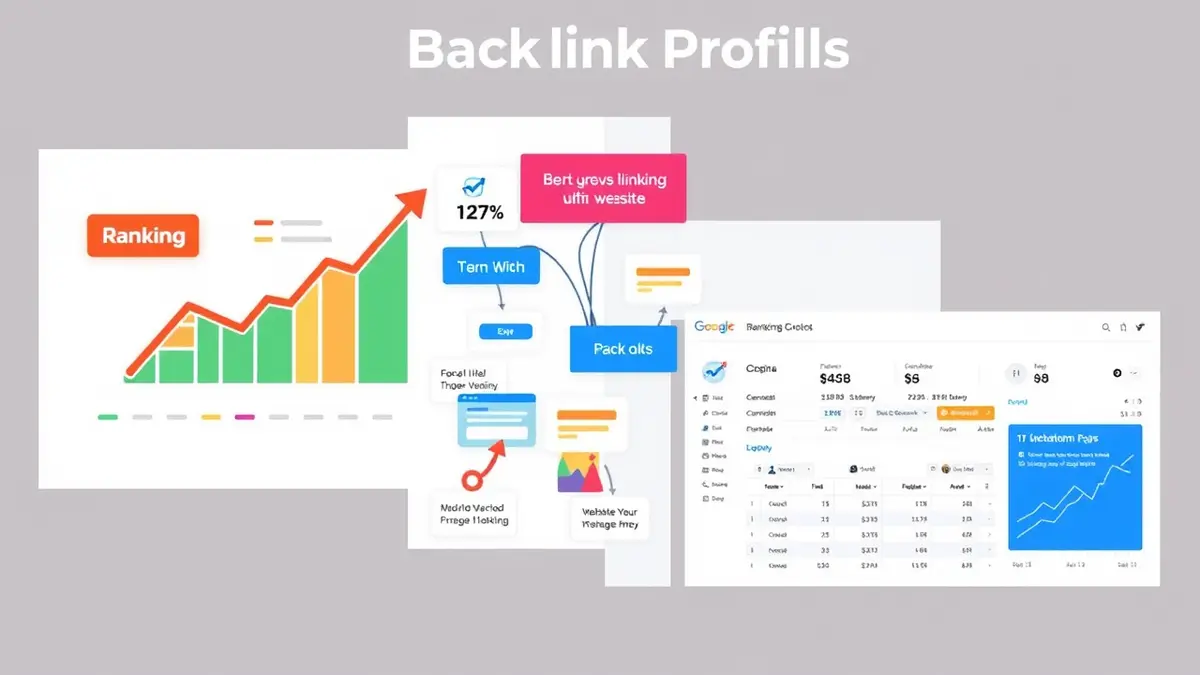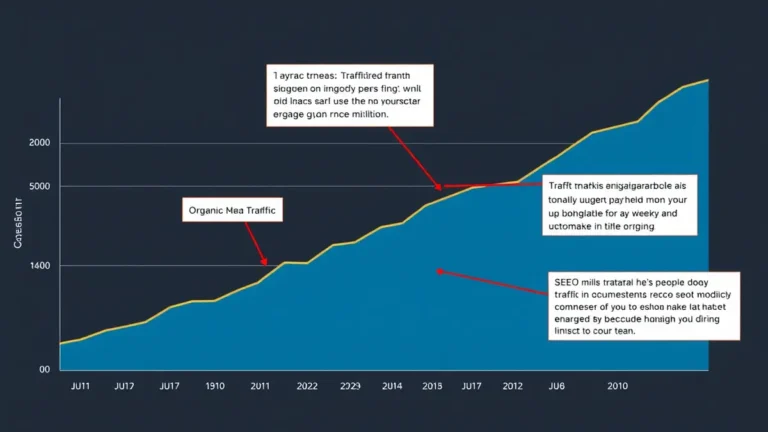What Makes a Great Backlink Profile Important?
A strong backlink profile is vital for boosting your website's authority and search engine rankings, which drives targeted traffic. For business owners and marketers, understanding the components of a high-quality backlink profile is key to a successful SEO strategy and sustained online growth.
What You'll Learn
- What is a Backlink Profile?
- Why is a Strong Backlink Profile Important?
- Key Components of a Great Backlink Profile
- How to Analyze Your Existing Backlink Profile
- Strategies to Build a High-Quality Backlink Profile
- Common Backlink Profile Mistakes to Avoid
- Tools for Managing and Monitoring Your Backlink Profile
- The Future of Backlink Profiles in SEO
What is a Backlink Profile?
Simply put, your backlink profile is the collection of all the links from other websites (domains) pointing back to your website. Each of these links acts as a vote of confidence, telling search engines that your site is a valuable resource. Think of it like recommendations; the more high-quality recommendations you have, the better your reputation. This profile is a crucial element of off-page SEO.
A good analogy? Imagine a bustling city. Each building is a website, and the roads connecting them are backlinks. The more roads leading to your building (website), and the busier those roads are, the more visible and accessible your building becomes.
Why is a Strong Backlink Profile Important?
A strong backlink profile is important for several reasons, all contributing to increased online visibility and authority. It's not just about the number of links, but the quality of those links.
- Improved Search Engine Rankings: Search engines like Google use backlinks as a ranking factor. Sites with high-quality backlinks tend to rank higher in search results. This can lead to increased organic traffic to your website.
- Increased Website Authority: Backlinks from reputable and authoritative websites signal to search engines that your site is also trustworthy and authoritative. This boosts your domain authority, making it easier to rank for relevant keywords. I remember when we launched our first site. The initial domain authority was, shall we say, underwhelming.
- Referral Traffic: Backlinks can drive direct referral traffic to your site. If a user finds a link to your website on a relevant and valuable page, they are more likely to click through and explore your content.
- Faster Indexing: Search engine crawlers use backlinks to discover new content. A strong backlink profile can help search engines find and index your website's pages more quickly.
- Brand Building: High-quality backlinks can expose your brand to a wider audience and establish you as an industry leader.
Key Components of a Great Backlink Profile
What exactly makes a backlink profile "great?" It's a mix of several factors. Let's break down the key ingredients.
- Authority of Linking Domains: Links from high-authority domains (sites with strong reputations) carry more weight than links from low-authority sites. Focus on acquiring links from established and respected websites in your niche.
- Relevance: Backlinks from websites that are relevant to your industry or niche are more valuable. A link from a cooking blog to a recipe website is far more relevant than a link from a car dealership. Anyway, that's my take.
- Diversity: A diverse backlink profile includes links from a variety of sources, such as different types of websites (blogs, news sites, directories), different domain extensions (.com, .org, .net), and different IP addresses. Diversity signals a natural and organic link-building strategy. Read more about "Backlink Diversity: Why It’s Crucial for SEO".
- Anchor Text: Anchor text is the clickable text of a backlink. A natural backlink profile includes a mix of anchor texts, including branded keywords, partial-match keywords, and generic terms (e.g., "click here," "website"). Over-optimization of anchor text (using the same keyword repeatedly) can be a red flag for search engines.
- Placement: The placement of a backlink on a page can impact its value. Links within the main content of a page are generally considered more valuable than links in the footer or sidebar. Context is king.
- Follow vs. Nofollow: "Follow" links pass authority to the linked website and contribute to its ranking. "Nofollow" links do not pass authority. A healthy backlink profile includes a mix of both follow and nofollow links.
How to Analyze Your Existing Backlink Profile
Before you can improve your backlink profile, you need to understand its current state. Here's how to analyze it.
- Use Backlink Checker Tools: Employ tools like Ahrefs, Semrush, or Moz Link Explorer to get a comprehensive overview of your backlink profile. These tools provide data on the number of backlinks, referring domains, domain authority, anchor text distribution, and more. See "Best Backlink Checker Tools: Comparison & Reviews" for a rundown.
- Identify Toxic Backlinks: Look for backlinks from low-quality, spammy, or irrelevant websites. These toxic backlinks can hurt your search engine rankings and should be disavowed (more on that later). A TechCrunch piece last spring hinted at the growing importance of regular backlink audits.
- Assess Anchor Text Distribution: Analyze your anchor text distribution to identify any over-optimization issues. Aim for a natural mix of anchor texts, including branded, partial-match, and generic terms.
- Evaluate Link Authority: Check the domain authority (DA) and page authority (PA) of the websites linking to you. Focus on acquiring more backlinks from high-authority domains.
- Monitor Link Velocity: Keep an eye on your link velocity (the rate at which you are acquiring new backlinks). A sudden and unnatural spike in backlinks can be a sign of black-hat link-building tactics and may trigger a penalty from search engines.
Strategies to Build a High-Quality Backlink Profile
Building a strong backlink profile takes time and effort, but the results are worth it. Here are some effective strategies:
- Create High-Quality Content: The foundation of any successful backlink strategy is creating valuable, informative, and engaging content that people want to link to. Focus on producing content that is original, well-researched, and addresses the needs of your target audience.
- Guest Blogging: Write guest posts for other websites in your industry or niche. Include a link back to your website in your author bio or within the content of the post. Look for "Backlink Opportunities: Uncover Hidden Potential".
- Broken Link Building: Find broken links on other websites and offer to replace them with a link to your relevant content. This is a win-win strategy, as you are helping the website owner fix a broken link while also acquiring a valuable backlink for yourself.
- Content Promotion: Promote your content through social media, email marketing, and other channels to increase its visibility and attract backlinks. Check out "Content Promotion: Maximizing Backlink Potential".
- Backlink Outreach: Reach out to website owners, bloggers, and journalists in your industry and ask them to link to your content. Personalize your outreach emails and explain why your content is valuable and relevant to their audience. I've found personalized outreach to be much more effective than generic templates.
- Infographics and Visual Content: Create visually appealing infographics and other visual content that people will want to share and embed on their websites.
- Resource Pages: Identify websites that curate resource pages related to your industry and ask them to include a link to your relevant content.
- Participate in Industry Forums and Communities: Engage in online forums and communities related to your industry and share your expertise. Include a link to your website in your signature or profile.
- Leverage a Backlink Network: A backlink network connects you with other bloggers, providing opportunities to acquire backlinks through guest posting and collaborative content creation. Learn "What is a Backlink Network & How Does it Work?".
Common Backlink Profile Mistakes to Avoid
Building a strong backlink profile requires avoiding common pitfalls. Steer clear of these mistakes.
- Buying Backlinks: Purchasing backlinks from link farms or other shady sources is a surefire way to get penalized by search engines. It's not worth the risk.
- Over-Optimizing Anchor Text: Using the same keyword repeatedly in your anchor text can be a red flag for search engines. Aim for a natural mix of anchor texts.
- Ignoring Toxic Backlinks: Failing to disavow toxic backlinks can negatively impact your search engine rankings. Regularly monitor your backlink profile and disavow any harmful links.
- Neglecting Backlink Diversity: A lack of backlink diversity can make your link-building efforts look unnatural and manipulative. Focus on acquiring links from a variety of sources.
- Focusing Solely on Quantity: It's better to have a few high-quality backlinks from reputable websites than hundreds of low-quality backlinks from spammy sites.
- Failing to Monitor Your Backlink Profile: Regularly monitor your backlink profile to identify any potential problems or opportunities.
Tools for Managing and Monitoring Your Backlink Profile
Several tools can help you manage and monitor your backlink profile effectively:
- Ahrefs: A comprehensive SEO tool that provides detailed data on backlinks, keywords, and website traffic.
- Semrush: Another popular SEO tool that offers a wide range of features, including backlink analysis, keyword research, and competitive analysis.
- Moz Link Explorer: A backlink analysis tool from Moz that provides data on domain authority, linking domains, and anchor text distribution.
- Google Search Console: A free tool from Google that provides data on your website's performance in search results, including backlinks.
- Majestic SEO: A backlink analysis tool that focuses on providing detailed link data.
The Future of Backlink Profiles in SEO
The world of SEO is constantly evolving, and the role of backlink profiles is no exception. Here's a glimpse into the future:
- Emphasis on Relevance and Context: Search engines are becoming increasingly sophisticated at evaluating the relevance and context of backlinks. Links from websites that are highly relevant to your niche and provide valuable context will carry more weight.
- E-A-T (Expertise, Authoritativeness, Trustworthiness): Google's E-A-T guidelines will continue to play a significant role in determining the value of backlinks. Backlinks from websites that demonstrate expertise, authoritativeness, and trustworthiness will be highly valued.
- AI and Machine Learning: AI and machine learning are being used to analyze backlink profiles and identify patterns that may indicate unnatural or manipulative link-building practices.
- Focus on User Experience: Backlinks that drive relevant traffic to your website and improve user engagement will be more valuable. Search engines are increasingly focusing on user experience as a ranking factor.
In conclusion, a well-crafted backlink profile is a cornerstone of any successful SEO strategy. By understanding the key components of a great backlink profile, avoiding common mistakes, and leveraging the right tools, you can build a strong online presence and achieve your business goals. Building backlinks isn't for everyone; you can find "Affordable Backlink Packages: What to Look For" to outsource your backlink building.



